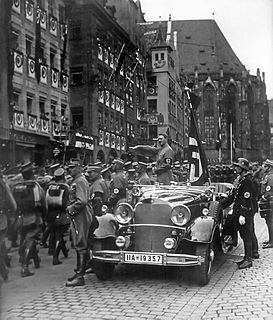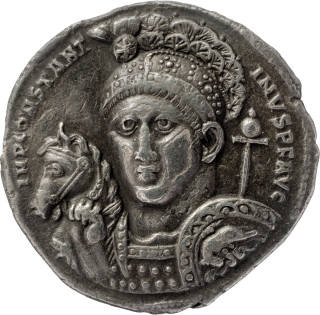 W
WThe Antarctic Snow Cruiser was a vehicle designed from 1937 to 1939 under the direction of Thomas Poulter, intended to facilitate transport in Antarctica during the United States Antarctic Service Expedition (1939–41). The Snow Cruiser was also known as "The Penguin," "Penguin 1" or "Turtle" in some published material.
 W
WThe Blutfahne, or Blood Flag, is a Nazi Party swastika flag that was carried during the attempted coup d’etat Beer Hall Putsch in Munich, Germany on 9 November 1923, during which it became soaked in the blood of one of the SA men who died. It subsequently became one of the most revered objects of the NSDAP. It was used in ceremonies in which new flags for party organizations were consecrated by the Blood Flag when touched by it.
 W
WThe Dinnie Stones are a pair of Scottish lifting stones located in Potarch, Aberdeenshire. They were made famous by strongman Donald Dinnie, who reportedly carried the stones barehanded across the width of the Potarch Bridge, a distance of 205+1⁄2 in, in 1860. They remain in use as lifting stones.
 W
WThe Helmet of Constantine was a form of helmet worn by the Roman Emperor Constantine the Great, now lost, which featured in his imperial iconography. According to a story recorded by Ambrose and others, it included relics gathered in the Holy Land by his mother, Empress Helena. Constantine's conversion to Christianity, which happened around AD 300, was of great importance. In this period it was believed that touching the body of the deceased or even something that came in contact with the person who had died was said to have special powers. This belief started a movement to find these relics to protect churches, cities, and even people.
 W
WThe Paris Gun was the name given to a type of German long-range siege gun, several of which were used to bombard Paris during World War I. They were in service from March to August 1918. When the guns were first employed, Parisians believed they had been bombed by a high-altitude Zeppelin, as the sound of neither an aeroplane nor a gun could be heard. They were the largest pieces of artillery used during the war by barrel length, and qualify under the (later) formal definition of large-calibre artillery. Also called the "Kaiser Wilhelm Geschütz", they were often confused with Big Bertha, the German howitzer used against Belgian forts in the Battle of Liège in 1914; indeed, the French called them by this name as well. They were also confused with the smaller "Langer Max" cannon, from which they were derived; although the famous Krupp-family artillery makers produced all these guns, the resemblance ended there.
 W
WThe location of the tomb of Genghis Khan has been the object of much speculation and research. The site remains undiscovered, although it is strongly implicated that the most likely location is somewhere in the vicinity of the Mongol sacred mountain of Burkhan Khaldun in the Khentii mountain range.
 W
WThis is an incomplete list of notable treasures that are currently lost or missing. Note that the existence of some of these treasures is mythical or disputed.
 W
WThe Twin Sisters are a pair of cannons used by Texas Military Forces during the Texas Revolution. They are among the most famous artillery in Texas military history with the "Come and Take It" cannon starting the revolution at the Battle of Gonzales and the Twin Sisters winning it at the Battle of San Jacinto. The Twin Sisters were also potentially used during the Mexican Invasions of 1842 and American Civil War.